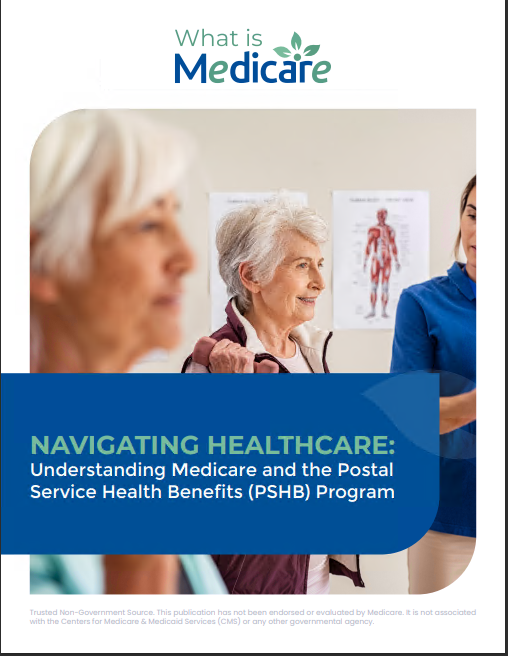Key Takeaways
- Understanding the Medicare enrollment process helps ensure timely access to the health benefits you need.
- Being aware of important dates and steps in the Medicare enrollment process can help you avoid late penalties.
Ready to Sign Up for Medicare? Here’s a Step-by-Step Look at the Enrollment Process
Signing up for Medicare is a significant milestone for many Americans, signaling a transition into a new phase of life. This federal health insurance program is crucial for those aged 65 and older, as well as certain younger individuals with disabilities. However, navigating the enrollment process can be overwhelming, especially with the various parts of Medicare and different enrollment periods to consider. This guide walks you through the essential steps of enrolling in Medicare, helping you make informed decisions about your health coverage.
Understanding Medicare and Its Components
Before diving into the enrollment process, it’s essential to grasp the basics of Medicare and its four main components: Part A, Part B, Part C, and Part D.
-
Medicare Part A covers hospital stays, skilled nursing facility care, hospice care, and some home health care services. For most people, there is no premium for Part A if they have paid Medicare taxes while working.
-
Medicare Part B includes doctor visits, outpatient care, preventive services, and some home health care. Unlike Part A, Part B typically requires a monthly premium.
-
Medicare Part C (also known as Medicare Advantage) is an alternative to Original Medicare (Part A and Part B). It is offered by private insurance companies approved by Medicare and may include additional benefits such as dental, vision, and hearing coverage.
-
Medicare Part D provides prescription drug coverage and is also offered through private insurance companies. Part D plans vary in cost and the medications they cover.
Step 1: Determine Your Eligibility
Eligibility for Medicare is generally straightforward. If you are a U.S. citizen or a legal permanent resident for at least five consecutive years and are 65 years old or older, you are eligible for Medicare. Some younger individuals with disabilities and people with End-Stage Renal Disease (ESRD) or Amyotrophic Lateral Sclerosis (ALS) also qualify for Medicare.
Step 2: Know When to Enroll
Understanding the enrollment periods is crucial to avoid penalties and ensure you receive your benefits when needed.
-
Initial Enrollment Period (IEP): This seven-month period begins three months before the month you turn 65, includes your birth month, and ends three months after. It is the best time to sign up for Medicare Parts A and B.
-
General Enrollment Period (GEP): If you miss your IEP, you can enroll during the General Enrollment Period, which runs from January 1 to March 31 each year. Coverage begins on July 1 of the same year, but a late enrollment penalty may apply.
-
Special Enrollment Period (SEP): If you are still working and have employer-sponsored health insurance, you may qualify for a SEP. This period allows you to enroll in Medicare Part B without facing a late penalty once your employment or group health plan ends.
Step 3: Decide on Your Medicare Coverage
Choosing between Original Medicare (Part A and Part B) and Medicare Advantage (Part C) is one of the most important decisions you will make during the enrollment process.
-
Original Medicare offers flexibility in choosing healthcare providers. You can visit any doctor or hospital that accepts Medicare. However, it does not cover everything; for instance, it does not include prescription drugs (Part D), dental, vision, or hearing services. To cover these gaps, you might consider purchasing a Medigap policy (Medicare Supplement Insurance).
-
Medicare Advantage (Part C) plans are offered by private insurers and combine Part A and Part B benefits. These plans often include additional coverage such as prescription drugs, dental, vision, and hearing. However, they may require you to use healthcare providers within a specific network and might involve additional out-of-pocket costs.
Step 4: Enroll in Medicare Parts A and B
The next step is to enroll in Medicare Parts A and B. If you are receiving Social Security or Railroad Retirement Board benefits, you will be automatically enrolled in both parts when you turn 65. If not, you will need to sign up.
-
Online Enrollment: The easiest way to enroll is online through the Social Security Administration (SSA) website. You can complete the entire process without needing to visit an office.
-
By Phone or In Person: You can also enroll by calling the SSA or visiting your local Social Security office. Due to possible wait times, especially during peak periods, online enrollment is often recommended.
Step 5: Consider Additional Coverage Options
Once you have enrolled in Medicare Parts A and B, you may want to consider additional coverage options to help with costs not covered by Original Medicare.
-
Medicare Part D: If you need prescription drug coverage, you can enroll in a Medicare Part D plan. Be sure to compare plans carefully, as coverage and costs can vary.
-
Medigap: If you choose Original Medicare, you might also consider purchasing a Medigap policy to cover out-of-pocket expenses such as copayments, coinsurance, and deductibles. Medigap plans are sold by private insurance companies and offer standardized benefits, meaning the same plan offers the same coverage regardless of where you buy it.
-
Medicare Advantage Plans (Part C): If you prefer an all-in-one plan that covers hospital, medical, and often prescription drug costs, a Medicare Advantage plan might be right for you. Be sure to review the plan’s network, additional benefits, and any extra costs involved.
Step 6: Review and Compare Plans Annually
Medicare is not a one-time decision; it requires regular review to ensure you have the best coverage for your needs. Each year, during the Medicare Open Enrollment Period (October 15 to December 7), you can review and make changes to your Medicare coverage. This period allows you to:
- Switch from Original Medicare to a Medicare Advantage plan (or vice versa).
- Join, switch, or drop a Medicare Part D prescription drug plan.
- Change from one Medicare Advantage plan to another.
It’s essential to compare the plans available in your area annually, as costs, benefits, and coverage networks can change. Use the Medicare Plan Finder tool on the official Medicare website to help you make an informed decision.
Step 7: Understand Potential Penalties
Missing your initial enrollment period can lead to penalties that could increase your Medicare costs for years to come.
-
Part B Late Enrollment Penalty: If you do not sign up for Part B when you are first eligible, you may have to pay a late enrollment penalty. This penalty is added to your monthly Part B premium and could last for as long as you have Part B coverage.
-
Part D Late Enrollment Penalty: Similarly, if you do not enroll in a Part D plan during your initial enrollment period and do not have other creditable prescription drug coverage, you may face a late enrollment penalty. This penalty is calculated based on the number of months you were without coverage.
To avoid these penalties, ensure you enroll in Medicare during your IEP unless you qualify for a Special Enrollment Period.
Step 8: Stay Informed and Seek Help
Navigating the Medicare enrollment process can be challenging, but resources are available to help you make informed decisions. You can:
- Contact Medicare: Reach out to Medicare directly for answers to specific questions about your coverage options.
- Speak with a Licensed Insurance Agent: These professionals can provide guidance on choosing the right Medicare plan based on your healthcare needs and budget.
- Visit the Official Medicare Website: The website offers a wealth of information, including a detailed breakdown of benefits, enrollment periods, and the plan comparison tool.
Stay on Track with Medicare Enrollment
Ensuring you have the right Medicare coverage is vital for managing your healthcare needs as you age. By following these steps and staying informed about your options, you can confidently navigate the Medicare enrollment process and secure the coverage that best suits your needs. Remember to review your Medicare plans annually and make any necessary adjustments during the Open Enrollment Period to ensure continued access to the healthcare services you require.
Contact Information:
Email: [email protected]
Phone: 6145554567










